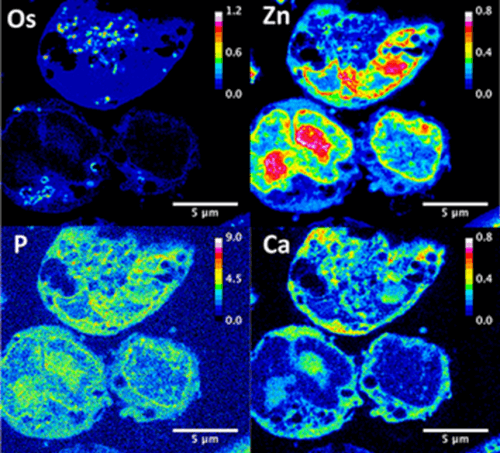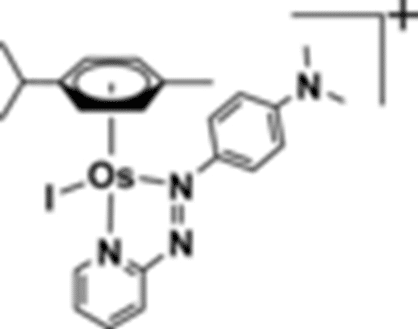Researchers have been able to see how an organometallic compound is able to adjust and eliminate cancer cells found in the body itself. The compound, organosmium (FY26), attacks the weakest part of cancer cells. The researchers claim that their new compound is fifty times more effective than other metal-based anticancer drugs.

[Translation by Dr. Nachmani Moshe]
Professor Peter J. Sadler, and his research group from the Department of Chemistry at the University of Warwick, demonstrated how the organo-osmium compound FY26 is able to eliminate cancer cells by locating and attacking their weakest part. This is the first time that a compound based on the metal osmium, which is fifty times more effective than the anti-cancer drug cis-platinum, has been observed to be effective against cancer.
With the help of the European particle accelerator, the researchers were able to examine the effect of the compound on ovarian cancer cells - while detecting the emission of fluorescent radiation that allows the activity of the compound to be monitored within the cells themselves. With the help of observing segments of cancer cells at the nanometer level, it was possible to reach an extremely high level of prot. As part of this method, it was possible to observe tiny organelles, such as the mitochondria that serve as the powerhouse of the cells. In cancer cells, errors and mutations occur in the DNA of the mitochondria, a fact that makes these organelles particularly weak and vulnerable. It was found that the new compound was able to settle in the mitochondria and there attack and destroy the functions essential to the existence of the cancer cells, in their weakest position. The researchers were also able to observe neutral metals produced by the body, such as zinc and calcium, concentrated around the cells. It is known that various metals, and especially calcium, are able to affect the activity of the cells, and the researchers believe that this neutral metal created by the body itself helps the compound FY26 to locate optimally in the mitochondria and attack the cancer.

More than half of the chemotherapy treatments against cancer that exist today use platinum compounds, drugs that came into use about forty years ago, so there is indeed a need to examine the medical benefit inherent in other precious metals. Although the research was conducted on ovarian cancer cells, the groundbreaking findings could be applicable to a wide range of other types of cancer. The study showed that the level of selectivity of the new compound between healthy cells and cancer cells is higher than that of the drug cis-platinum - so that its therapeutic effect on cancer cells is higher than that on healthy cells.
The lead researcher comments that this research could lead to the development of new cancer treatments: "There is an urgent need for the development of anti-cancer drugs with new mechanisms of action that can combat tolerance and lead to a reduction in negative side effects." The use of the particle accelerator allowed the researchers not only to locate the active site of the new compound but also to study the movement of the neutral metals. Studies of this type could open a window to innovative approaches to drug discovery and their use, explains the researcher.
